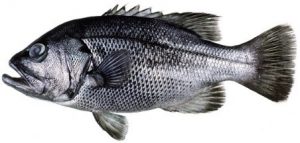Short for environmental DNA, eDNA is the DNA found in cells shed by plants, animals and microbes into the environment, just as we shed hair and skin cells. Thanks to enhanced DNA sequencing processes and DNA barcode reference libraries, there are now survey techniques that allow organisms in many cases to be detected and identified to the species level without even seeing them.
Environmental DNA surveys can generally be divided into two types: specifically targeted surveys focused on a single species; and broad-based surveys providing an overall sweep of taxonomic presence in a particular environmental medium.
eDNA data is helping to answer many different research questions
Uptake of eDNA as a biomonitoring tool by government and industry is growing rapidly. eDNA is quickly becoming a standard tool in the environmental scientist’s kit.
Searching for Nessie
eDNA continues to be used in surprising ways, with a team of researchers from New Zealand sampling water from Loch Ness in Scotland to search for evidence of sharks, seals, plesiosaurs and other imagined candidates for the Loch Ness Monster. What did they find? Plenty of eels. What other cryptic species can you imagine searching for?
Mapping soil Microbiomes
The Australian Microbiome Project has mapped the soil and marine microbiomes of Australia spanning the entire Australian continent and covering its marine waters from Antarctic to Christmas Island. The team is now characterising the function of microbes in different ecosystems.
Detecting reef species
On reefs, eDNA can provide a shortcut for detecting species. CSIRO researcher Cindy Bessey compared conventional and eDNA methods of detecting tropical fish species on the reefs surrounding Browse Island to the north of Australia. Cindy watched 100 hours of underwater video footage recorded over two years and counted 99 species of tropical fishes. Combining her efforts with other researchers, who used multiple approaches from video to diving, a total of 200 fish species were identified. Alternatively, using eDNA techniques on water sampled at two locations from just one trip to Browse Island, Cindy detected 209 fish species. Her team is now refining methods for filtering eDNA from seawater.
Cindy’s upcoming paper in the journal Environmental DNA, describing a fish biodiversity survey of a remote tropical atoll, will link to the associated eDNA records on ALA. This should become commonplace.
Other teams are testing living sponges for their inherent ability to monitor the animals surrounding them.
Making data more accessible
“In eDNA we generate millions of DNA barcodes in a single experiment – rather than this data languishing on someone’s computer or hiding on a database – it is vital we explore ways to make the data accessible,” said Prof. Michael Bunce, Chief Scientist, Environmental Protection Authority, New Zealand.
“The incorporation of eDNA data alongside other biological data within ALA is a world first, it provides a way for everyone to use and re-use the data. The integration of biological datasets like this is vital as we build more nuanced tools to understand how our environment is changing around us.”
eDNA data in the ALA
“The Atlas of Living Australia is continually growing. We now have over 85 million species occurrence records and we’re looking to include new types of data, including eDNA,” says ALA Director Andre Zerger.
“We’ve worked closely with research communities to figure out the best way to present eDNA in the ALA and we’re pleased this type of data is now available and accessible to our users.”
So far, eDNA data uploaded into the ALA includes:
-

Image from the Australian National Fish Collection, CSIRO. Species specific survey data, where eDNA surveys can be used as a source of both presence and absence data, such as eDNA data from eggs and larvae of the West Australian Dhufish (Glaucosoma hebraicum).
Read more about this research by CSIRO’s Joanna Strzelecki and colleagues.
- Large scale eDNA survey data that have the potential to fill data gaps both spatially and taxonomically, such as eDNA from the Australian Microbiome Project.
View records.Read more about this research by CSIRO’s Andrew Bisset and colleagues at BioPlatforms Australia.
-

Image by Corinna Paeper CC-BY-NC-Int. Species interaction data, for instance where gut or faeces eDNA sampling is done on a traditionally surveyed organisms. For example, eDNA data from Mobula rays (Mobula sp. Rafinesque) stomach contents in the Bohol Sea, Philippines.
Read more about this research by CSIRO’s Andrew Bisset and colleagues at BioPlatforms Australia.
You can now upload and access eDNA data using the ALA
ALA contributors can submit eDNA records to ALA. Users can filter this type of data to include or exclude it from searches.
Read Environmental DNA (eDNA) in the ALA to find out more.
Back to ALA Newsletter February 2020